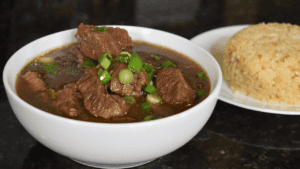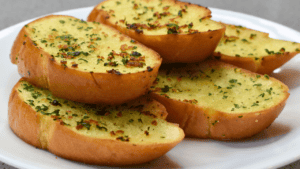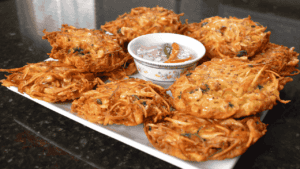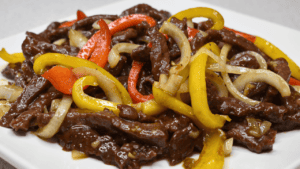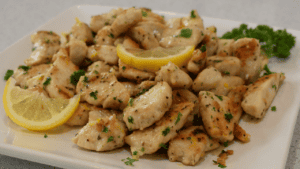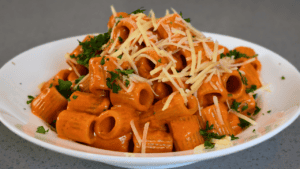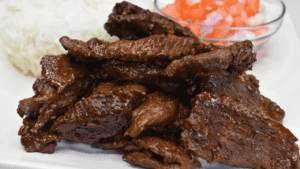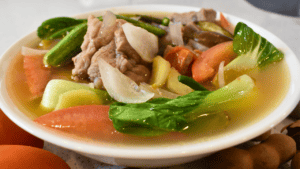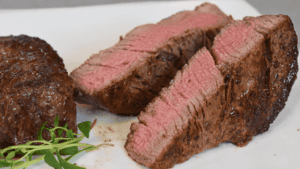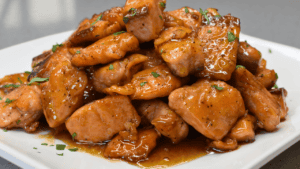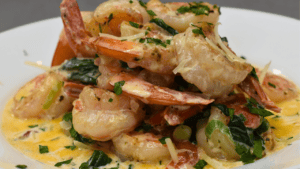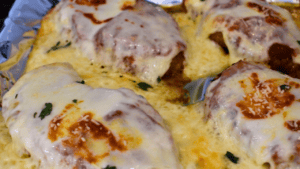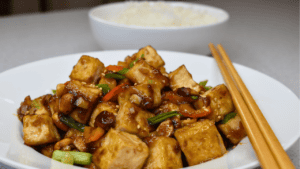Pancit Bihon Guisado
Pancit Bihon Guisado is a popular Filipino noodle dish made with thin rice noodles (bihon), sautéed with vegetables, meat and/or seafood, and flavored with soy sauce, citrus juice, and other seasonings. It is commonly served as a main dish or as a side dish in celebrations and special occasions in the Philippines.

Mastering Pancit Bihon Guisado: A Guide to the Iconic Filipino Dish
Introduction
Pancit Bihon Guisado not only fills the stomach but also warms the heart with each savory forkful. This classic Filipino noodle dish is a staple at family gatherings, birthdays, and festivities, symbolizing long life and good health. Its versatility and ease in preparation make it a beloved dish by cooks of all skill levels.
History and Origins Of Pancit Bihon Guisado
Pancit Bihon Guisado carries with it a rich history, deeply woven into the fabric of Filipino culture. A testament to Chinese influence in the Philippines, ‘pancit’ is derived from the Hokkien phrase “pian i sit,” which means “something conveniently cooked.” Over generations, Filipinos have embraced and made this dish uniquely their own.
Ingredients and Preparation
Compiling the perfect blend of ingredients is key to an authentic Pancit Bihon Guisado experience:
- Pancit Bihon – Thin rice noodles known for their light texture.
- Vegetables – Carrots, snow peas, and celery provide a colorful crunch.
- Protein – While shrimp is traditional, chicken or tofu can be used.
- Sautéed Aromatics – Garlic and onion form the fragrant base.
- Seasonings – Salt, pepper, and soy sauce bring the dish together with umami flavors.
To prepare, start by sautéeing aromatics and vegetables, then add your protein. The cooked toppings are then set aside and reintroduced after the bihon noodles have absorbed the chicken broth’s rich flavors and soy sauce’s savory notes, creating a satisfying, complex taste.
Variations and Regional Differences
Different regions offer their twists to Pancit Bihon Guisado. In some areas, liver, kikiam, or chorizo slices are added for extra indulgence. Local vegetables might also be incorporated, reflecting the biodiversity of the Philippine archipelago. Every variation respects the fundamental character of the noodle dish while showcasing regional palates.
Tips for Perfect Pancit Bihon Guisado
Attaining the quintessential balance of textures and flavors in Pancit Bihon Guisado requires a few pro tips:
- Sauté Over High Heat – This ensures your vegetables stay vibrant and crisp.
- Avoid Overcooking the Noodles – Bihon should be springy, not soggy.
- Season in Layers – Build flavor by seasoning throughout the cooking process.
Avoid common mistakes, like an excess of soy sauce, which can overwhelm the delicate harmony of the dish.
Serving and Pairing Suggestions
Squeeze a wedge of lemon or calamansi over your Pancit Bihon for a zesty finish. It pairs beautifully with a plate of lumpia or ripe mangoes for dessert. A chilled glass of iced tea or a light beer complements the dish’s savoriness flawlessly.
Health Benefits and Nutritional Value
Pancit Bihon Guisado’s nutrient profile is as diverse as its ingredients. Rich in carbohydrates and protein, it offers fiber from the vegetables and potential antioxidant benefits from the garlic and onion, sustaining both the body and spirit.
Pancit Bihon Guisado embodies the spirit of Filipino cuisine—communal, flavorful, and steeped in history. This dish not only satisfies hunger but also connects people to the rich tapestry of Filipino culinary tradition. So whether you’re a seasoned home cook or a newly forged food enthusiast, Pancit Bihon Guisado is a dish that welcomes all to the table with open arms and a promise of comfort in every bite.
—
If you’re looking to whip up your own Pancit Bihon Guisado, remember to refer to the recipe ingredients and instructions provided earlier in the blog post. Happy cooking, and enjoy the rich, unforgettable flavors of this Filipino favorite.
—
Frequently Asked Questions
What is the difference between Bihon and Guisado?
Bihon and Guisado are both types of Filipino noodles, but there are some key differences between them.
- Type of Noodle: The main difference between Bihon and Guisado is the type of noodle used in each dish. Bihon is typically made with thin rice noodles, while Guisado can be made with either wheat or egg noodles.
- Method of Cooking: Another difference lies in the way the noodles are cooked. Bihon is usually soaked in water to soften before being stir-fried with other ingredients, while Guisado involves cooking the raw noodles directly with a sauce or broth.
- Flavoring: While both dishes may use similar ingredients such as vegetables and meat, they differ in their flavor profiles. Bihon tends to have a mild and subtle taste, allowing for the flavors of the other ingredients to shine through, while Guisado has a bolder flavor due to its richer sauce.
- Origin: Bihon originated from China and was brought to the Philippines by Chinese immigrants centuries ago. On the other hand, Guisado has been influenced by Spanish cuisine during colonization and developed into a Filipino dish over time.
- Placement on Menu: In Filipino cuisine, it is common for restaurants or eateries to have both Bihon and Guisado on their menu as separate dishes rather than one being an alternative version of another.
What is the meaning of Guisado in Filipino?
The meaning of Guisado in Filipino is “stewed” or “braised.” This refers to the cooking method of slowly simmering the ingredients in a sauce until they are tender and flavorful. Guisado dishes often have a rich and hearty taste, making them a popular comfort food in Filipino cuisine.
Is pancit healthy or unhealthy?
Pancit can be both healthy and unhealthy, depending on how it is prepared. Traditional pancit dishes are typically low in fat and high in protein and vegetables, making them a nutritious choice. However, some pancit recipes may use high amounts of salt, oil, and MSG, which can make them less healthy.
What is Pancit Bihon best paired with?
Pancit Bihon is best paired with a variety of dishes, including grilled meats, seafood, and vegetable dishes. It can also be served on its own as a main dish or as a side dish alongside other Filipino favorites, such as lumpia or adobo.

Pancit Bihon Guisado
Ingredients
- 454 grams pancit bihon
- 2 tbsps cooking oil
- 3 cloves garlic chopped
- 1 whole onion medium-sized
- 1 whole carrot medium-sized
- 1 cup snow peas
- 1 stalk celery chopped
- 2 cups shrimp peeled, tail-on
- 1 tsp salt
- 1 tsp black pepper ground
- 5 cups chicken broth
- 1/2 cup soy sauce
Instructions
- In a frying pan, sauté garlic, onion, carrot, snow peas, and celery.
- Add the shrimp and season with salt and pepper. Cook for 5 minutes.
- Remove the shrimp and vegetables from the frying pan.
- Pour chicken broth into the frying pan and bring it to a boil.
- Add Pancit Bihon and cook for 5 minutes.
- Stir in soy sauce and continue cooking until the noodles absorb the sauce.
- Finally, add back the sautéed shrimp and vegetables. Cook for another 2 minutes before removing from heat.
- Serve with lemon or calamansi if desired.
